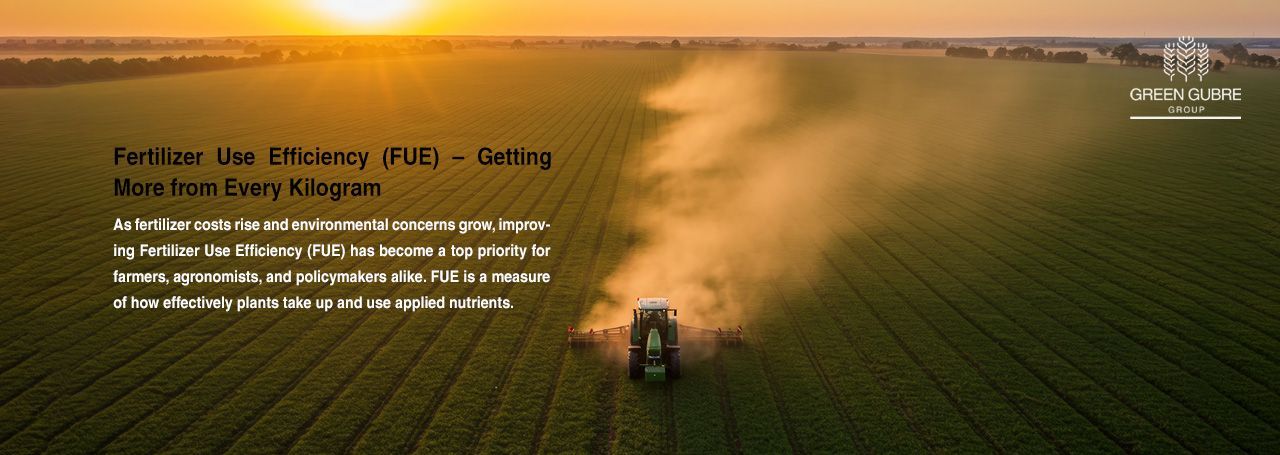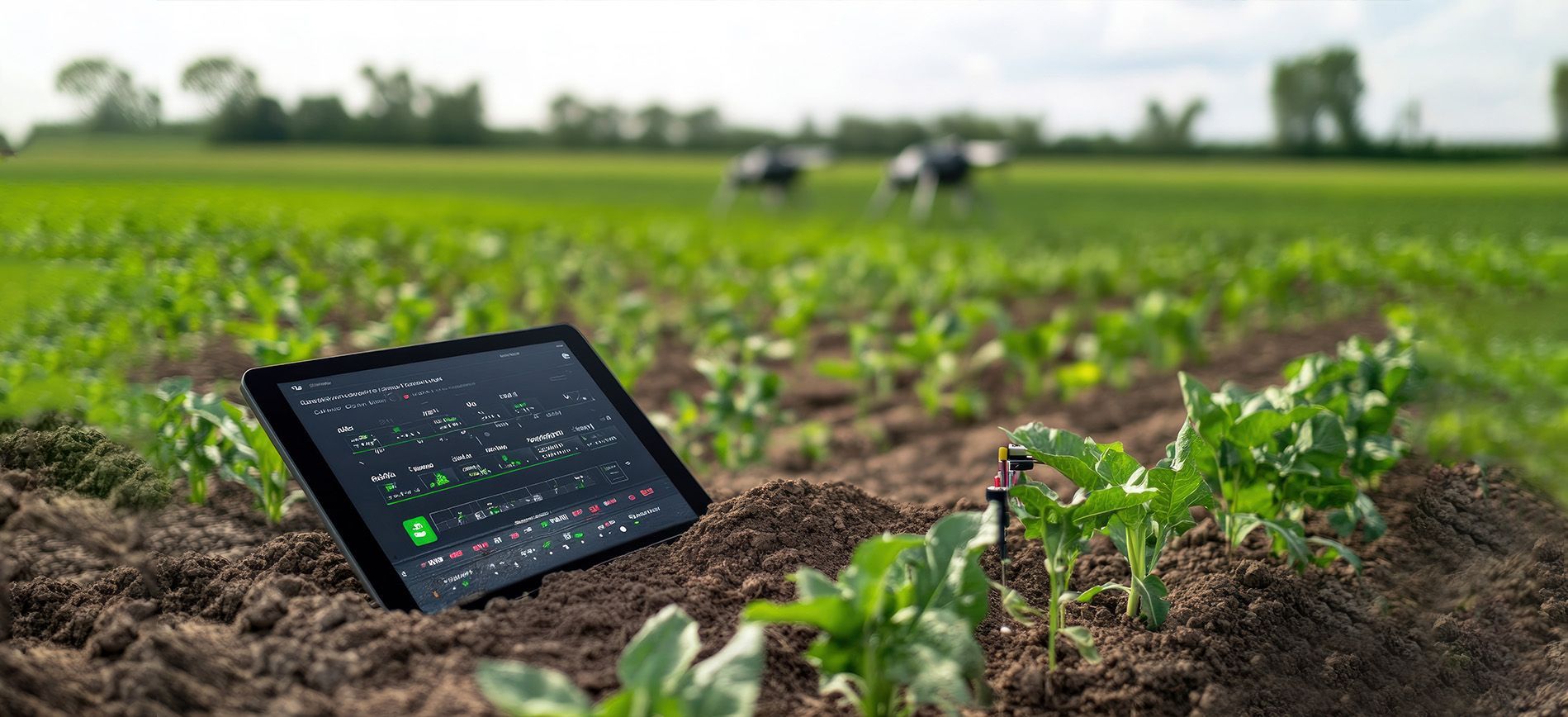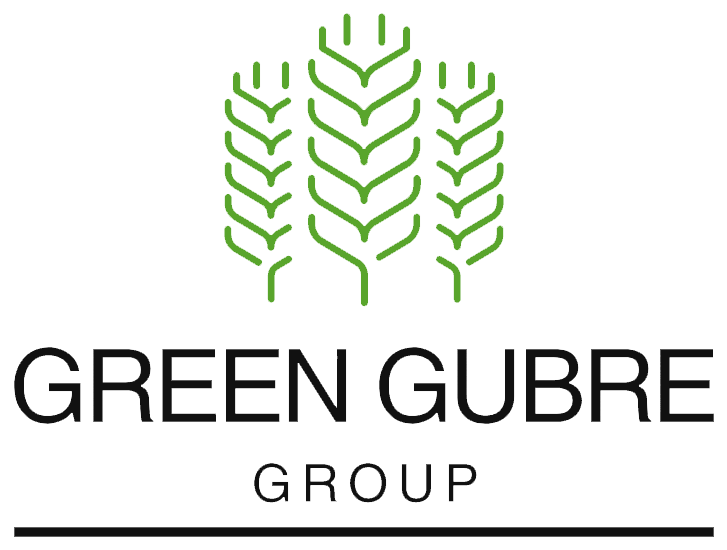Fertilizer Use Efficiency (FUE) – Getting More from Every Kilogram
Fertilizer Use Efficiency (FUE) – Getting More from Every Kilogram

Introduction: Why Efficiency Matters More Than Ever
As fertilizer costs rise and environmental concerns grow, improving Fertilizer Use Efficiency (FUE) has become a top priority for farmers, agronomists, and policymakers alike. FUE is a measure of how effectively plants take up and use applied nutrients. A low FUE means wasted inputs, lost profits, and environmental degradation. A high FUE, on the other hand, translates to better yields, reduced nutrient loss, and more sustainable farming.
Whether you’re using urea, DAP, NPK blends, or specialty products, optimizing your FUE is the smart path forward—financially, agronomically, and ecologically.
What Is Fertilizer Use Efficiency (FUE)?
FUE is typically defined as the ratio of crop yield (or nutrient uptake) to the amount of nutrient applied. For example:
- Agronomic Efficiency (AE) = Yield increase per unit of nutrient applied
- Recovery Efficiency (RE) = Portion of applied nutrient taken up by the crop
- Physiological Efficiency (PE) = Biomass or yield per unit of nutrient absorbed
FUE varies widely depending on:
- Fertilizer type and timing
- Application method
- Soil type and moisture
- Crop species and variety
Typical Nitrogen Use Efficiency (NUE) on farms is only 30–50%—meaning over half of applied nitrogen is lost to leaching, volatilization, or denitrification.
Strategies to Improve FUE
1. Use the 4Rs of Nutrient Stewardship:
- Right Source – Use fertilizers matched to crop and soil needs (e.g., nitrates in cool soils, coated urea in sandy fields)
- Correct Rate – Avoid over-application or blanket dosing
- Right Time – Split applications around crop demand peaks
- Right Place – Place fertilizers close to roots via banding or fertigation
2. Adopt Enhanced Efficiency Fertilizers (EEFs)
EEFs include:
- Controlled-release fertilizers
- Stabilized nitrogen (urease/nitrification inhibitors)
- Polymer-coated products
These technologies reduce nutrient losses and extend availability during critical growth periods.
Source – IFA – Enhanced Efficiency Fertilizers
3. Precision Agriculture Tools
GPS-guided spreaders, variable rate application (VRA), and remote sensing allow site-specific nutrient application, reducing waste and improving ROI.
4. Improve Soil Health
Healthy soils with high organic matter and biological activity naturally increase nutrient retention and availability. Practices like cover cropping, compost addition, and reduced tillage indirectly boost FUE.
Crop-Specific FUE Examples
| Crop | Average FUE (%) | Key Considerations |
|---|---|---|
| Rice | 30–50 | Water management is critical for N use |
| Maize | 40–60 | Responds well to split N applications |
| Wheat | 35–50 | Timing and form of N matter |
| Potatoes | 50–70 | High K and micronutrient demand |
| Tomatoes | 40–80 | Drip fertigation improves FUE |
Source – Journal of Plant Nutrition
Environmental and Economic Impact of High FUE
| Benefit | Outcome |
|---|---|
| Reduced runoff and leaching | Protects groundwater and surface water |
| Lower greenhouse gas emissions | Especially nitrous oxide from nitrogen fertilizers |
| Input cost savings | Less fertilizer is needed to achieve the exact yield |
| Resilient systems | Efficient nutrient use supports yield under stress |
Improving FUE aligns profitability with environmental stewardship—an increasingly important balance in both regulatory and market-driven agriculture.
Source – FAO – Efficient Fertilizer Use
Green Gubre Group’s Support for High FUE
We are committed to helping farmers maximize their return on every kilogram of fertilizer through:
- Enhanced Efficiency Fertilizer (EEF) product line
- Tailor-made NPK blends for local soils and crops
- Precision mapping, dosing, and application support
- Agronomic consultation and on-field FUE benchmarking
Together, we can reduce waste and build more intelligent, more sustainable systems.
Conclusion: Do More with Less, Sustainably
Fertilizer efficiency is no longer optional—it’s essential. By adopting a combination of precision techniques, better products, and soil-centric practices, farmers can drive yields while reducing waste and protecting ecosystems.
Start with the 4Rs. Upgrade to EEFs—leverage data. Build soil. And above all, think beyond application rates to nutrient efficiency as a system.




